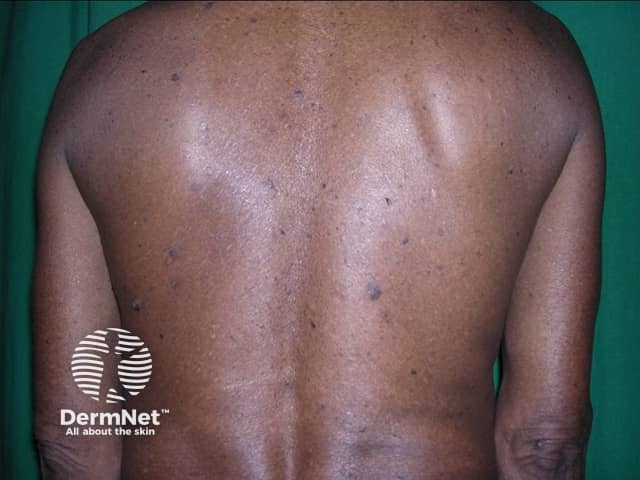Main menu
Common skin conditions

NEWS
Join DermNet PRO
Read more
Quick links
Author: Vanessa Ngan, Staff Writer, 2005. DermNet revision August 2021.
Introduction
Demographics
Causes
Clinical features
Diagnosis
Treatment
Outcome
Chronic arsenic poisoning, also called arsenicosis, is due to repeated or continuous exposure to arsenic compounds, leading to the accumulation of arsenic in the body.
The three main sources of exposure are occupational exposure, natural contaminants of drinking water (from some deep water wells) and stimulants used by sportsmen and in compounded medications such as the patent medicine, Fowler's tonic.
Occupational exposure is mainly from the smelting industry, in which arsenic is a by-product of ores containing lead, gold, zinc, copper, cobalt, and nickel. It is also used in glass manufacturing and the microelectronics industry (where gallium arsenide is used to produce some semiconductor computer chips).
Arsenic has been found in ancient Chinese medicinal remedies.
There are several forms of arsenic. Pentavalent arsenic is well absorbed through the gut but less toxic than the trivalent form which is more lipid soluble and absorbed through the skin. The most toxic form is arsine gas, which is inhaled.
Arsenic compounds are well absorbed within 24 hours and redistributed to the liver, lungs, intestinal wall, and spleen, where they bind to the sulfhydryl groups of tissue proteins. Arsenic also replaces phosphorus in the bone where it may remain for years. Hence, chronic poisoning can be detected years after exposure has stopped.
Symptoms and signs of chronic arsenic poisoning may not start to appear until 2 to 8 weeks after exposure and some, such as skin cancers, may take years.

Hyperpigmentation and raindrop hypopigmentation

Arsenical keratoses

Skin cancers
Typical findings include:
Affected organ |
Features |
|---|---|
Skin |
|
Nails |
|
Hair |
|
Nervous system |
|
Blood and urine |
|
Other |
|
Arsenic can be measured in blood and urine samples. Hair and nail samples may detect arsenic if exposure was only recently ceased.
Skin biopsy of arsenical keratoses show hyperkeratosis and papillomatosis, usually with no cellular atypia.
There is no specific treatment for chronic arsenic poisoning. Once it has been identified further exposure should be avoided.
Smoking should cease as the risk of lung and bladder cancer is markedly increased in smokers with chronic arsenic poisoning.
Arsenical keratoses may be treated with cryotherapy, curettage and diathermy or, if numerous, topical imiquimod and oral acitretin.
Regular skin checks may be recommended due to the increased risk of non-melanoma skin cancer.
Recovery from the signs and symptoms may take weeks to months from when exposure is stopped. In particular, effects on the nervous system may take months to resolve and in some cases, a complete recovery is never achieved.